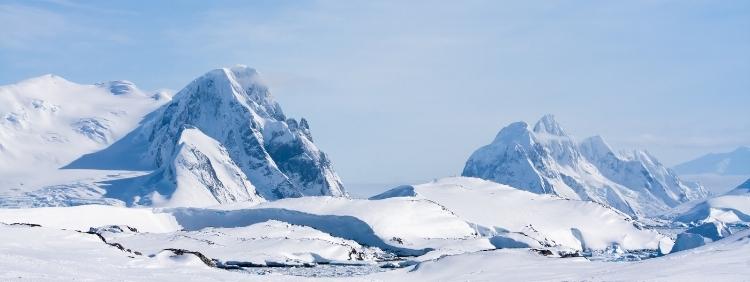Do Spiders Live in Antarctica?

If you’re the kind of person who has been searching the world around for a place where those beady-eyed, eight-legged friends are sure never to be found, Antarctica is it. As of yet, absolutely no spiders have been found in Antarctica, and thanks to the constant sub-zero temperatures, there likely never will be any discoveries of spiders there. If you’re looking for a life without spiders and spider pest control, Antarctica is the destination for you.
Are Sea Spiders Regular Spiders That Swim?
There closest thing that even resembles a spider in Antarctica is the sea spider. Don’t worry! No one is backtracking; the sea spider is no more a spider than a seahorse is an actual horse. The two creatures are only very loosely related. The Antarctic sea spider can be no larger than the head of a pencil eraser or grow to over 10 inches and live in freezing waters. Like its very distant cousin, the sea spider has eight legs, most of the time, and looks pretty creepy.
Spiders
- Animalia, Arachnida, Arthropoda
- Two body segments
- Eight legs
- No antennae
- No wings
- Cannot chew
- Breathe air
Sea Spiders
- Animalia, Pycnogonida, Arthropoda
- One body segment
- Eight to twelve legs
- No antennae
- No wings
- Cannot chew and instead uses proboscis
- Absorb oxygen through the exoskeleton
Could Spiders Adapt To Living in Antarctica?
After learning about sea spiders, you must be thinking it’s only a matter of time before they crawl out of the ocean and onto the land. Don’t worry; this standard evolutionary practice is not a possibility for the sea spider.
First, remember that sea spiders are not actually spiders; they are just called that because they have the same long, spindly legs and share the same phylum. Sea spiders are no more likely to turn into arachnids than a sea cow, the manatee, is to turn into an actual cow.
Second, some species of sea spiders have been around since the Jurassic period. If you’re unsure how long ago that might be, it was almost two million years ago. If there were ever a time to turn into a real spider and hop out of the ocean, it likely would have happened before now.
Third, Antarctica is too cold for almost any living creature to live there, including humans. There are no known indigenous humans from Antarctica.
How Do Spiders Survive the Cold Everywhere Else?
Spiders have advanced defence and survival mechanisms indeed. If you have ever tried to trap or catch a spider that was lurking around your house without the help of professional indoor spider control, you will know all about their masterful survival skills. Spiders, however, have another advanced skill for survival.
Spiders can survive cold winter weather through an ectothermic process called hardening. Spiders can adapt their body temperature however they need to survive. When that adaptation is not enough in cold weather, they can slow their functions down and produce a unique chemical inside their bodies. This chemical lowers the freezing point of the fluids in their bodies to as low as 23 degrees Fahrenheit.
While the summer temperatures in Antarctica have been known to hit nearly 60 degrees Fahrenheit, those temperatures are not sustained even for 24 hours usually. At night, the temperature drops back down to freezing or below, even in the warmest months. The average annual temperature clocks in at -56 degrees Fahrenheit, with the coldest ever temperatures recorded at -144 degrees Fahrenheit. Despite their special skill of hardening, spiders, like almost all other creatures, are unable to withstand the sub-zero temperatures of the Antarctic.
If you are still saving up for your big move to Antarctica and need professional pest or spider control in the meantime, contact Truly Nolen today for a consultation.